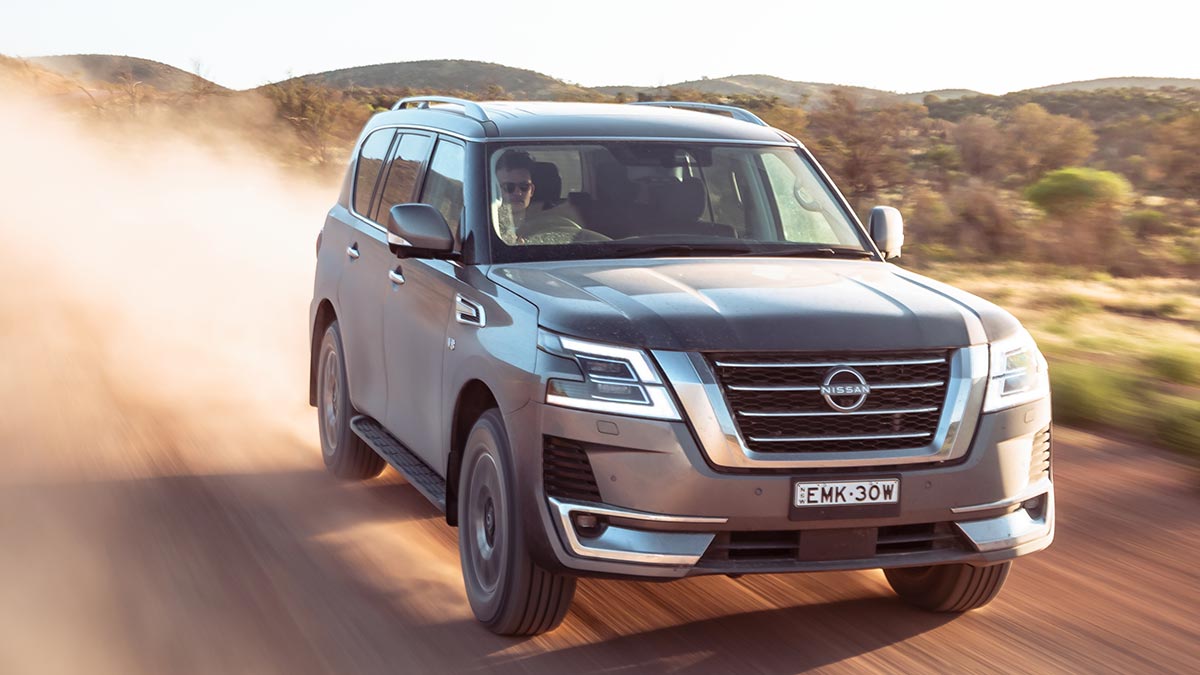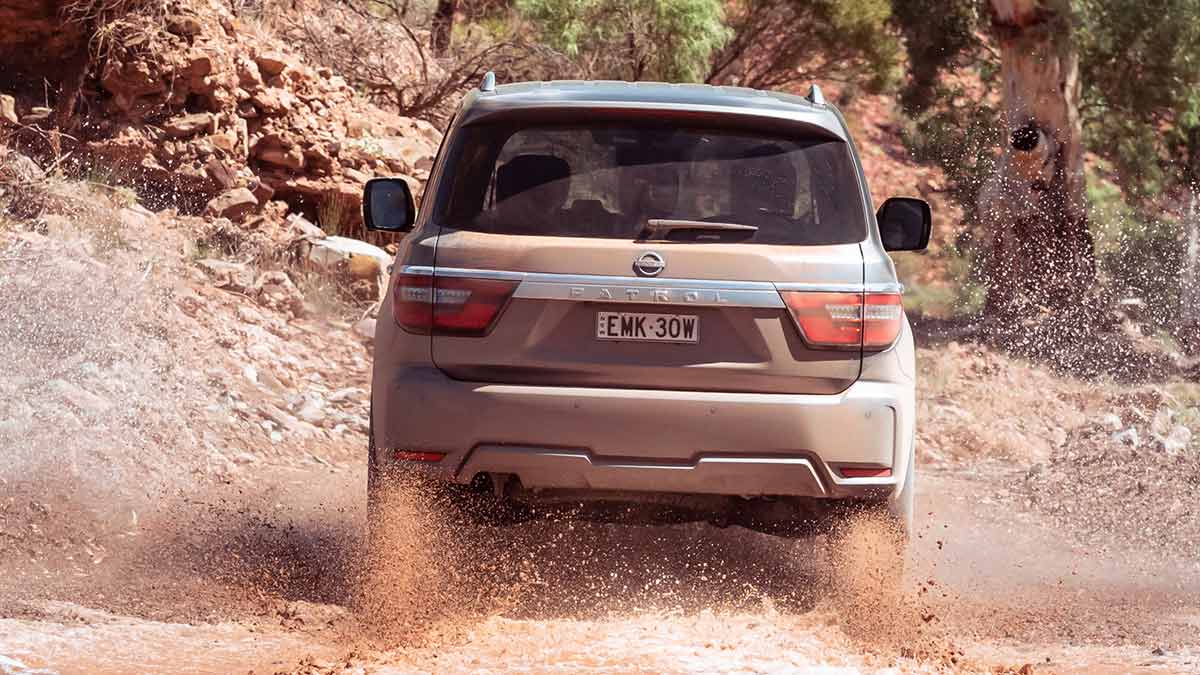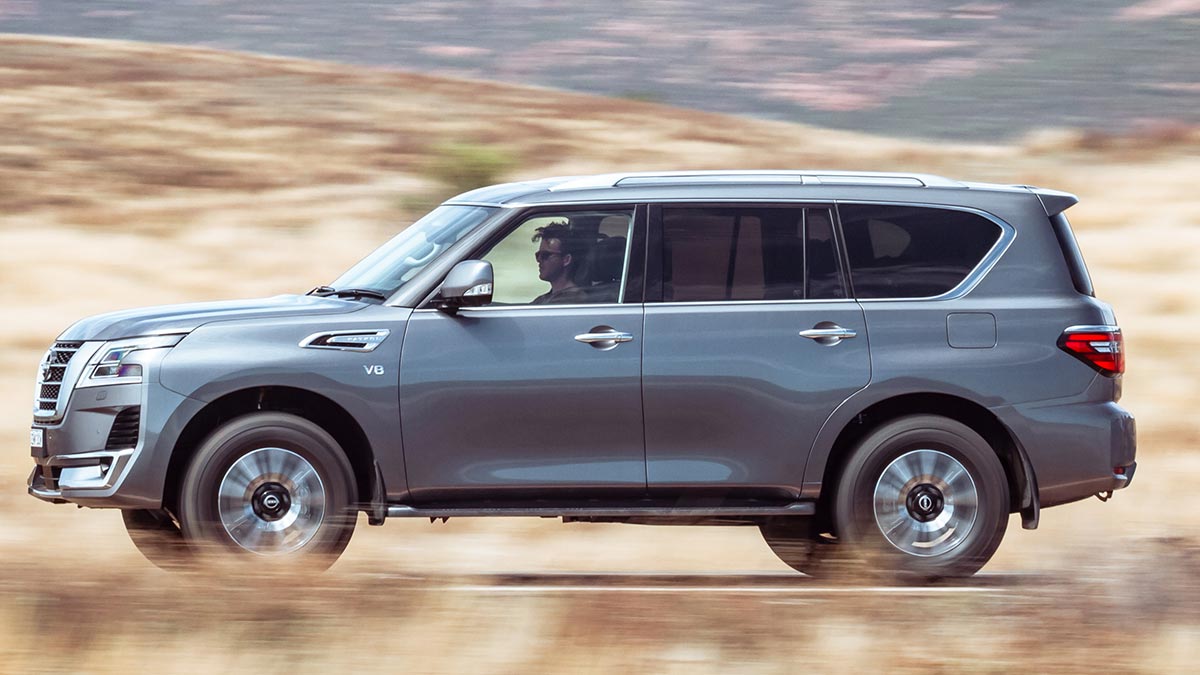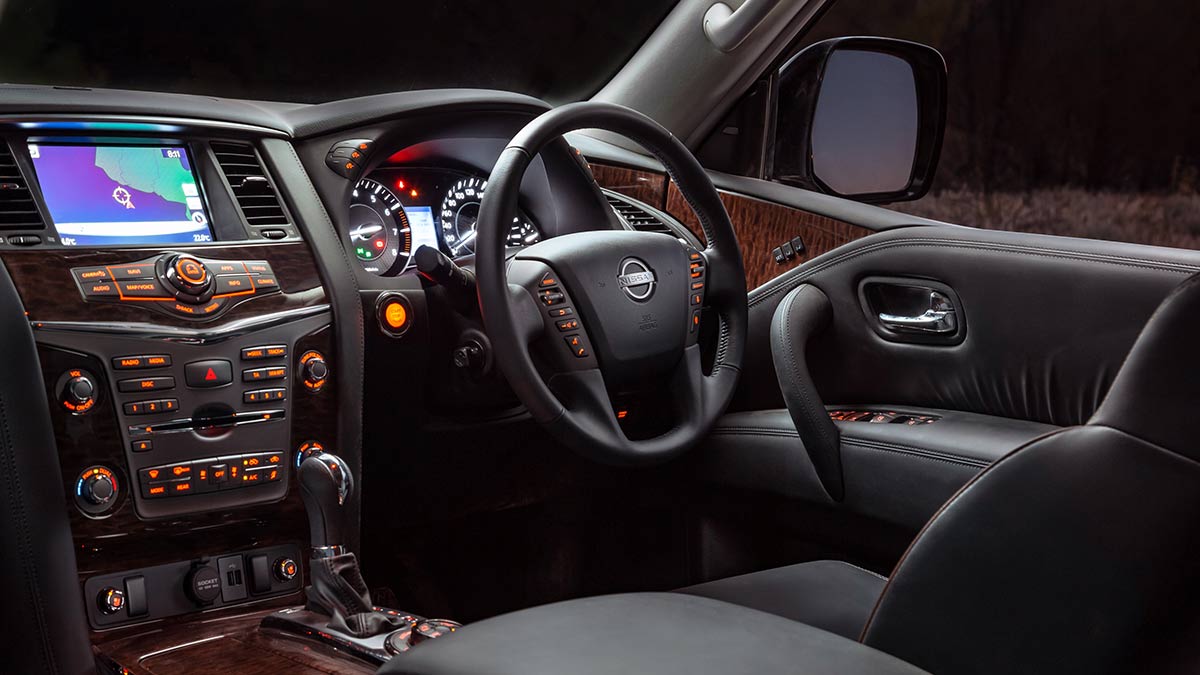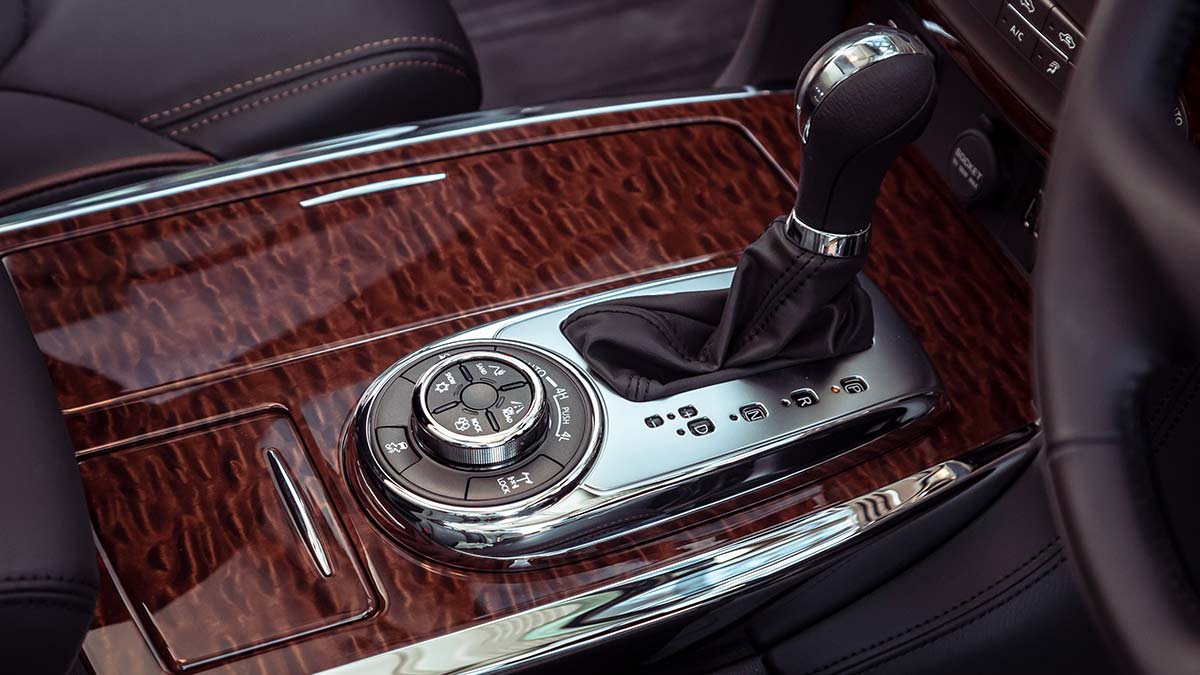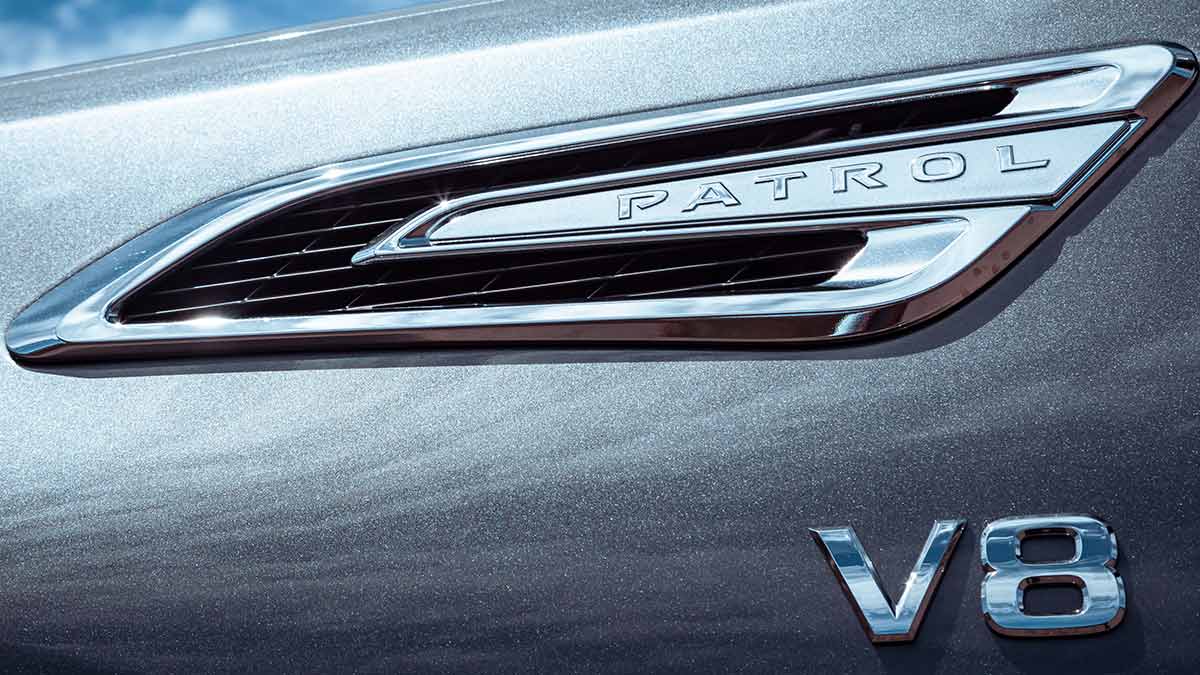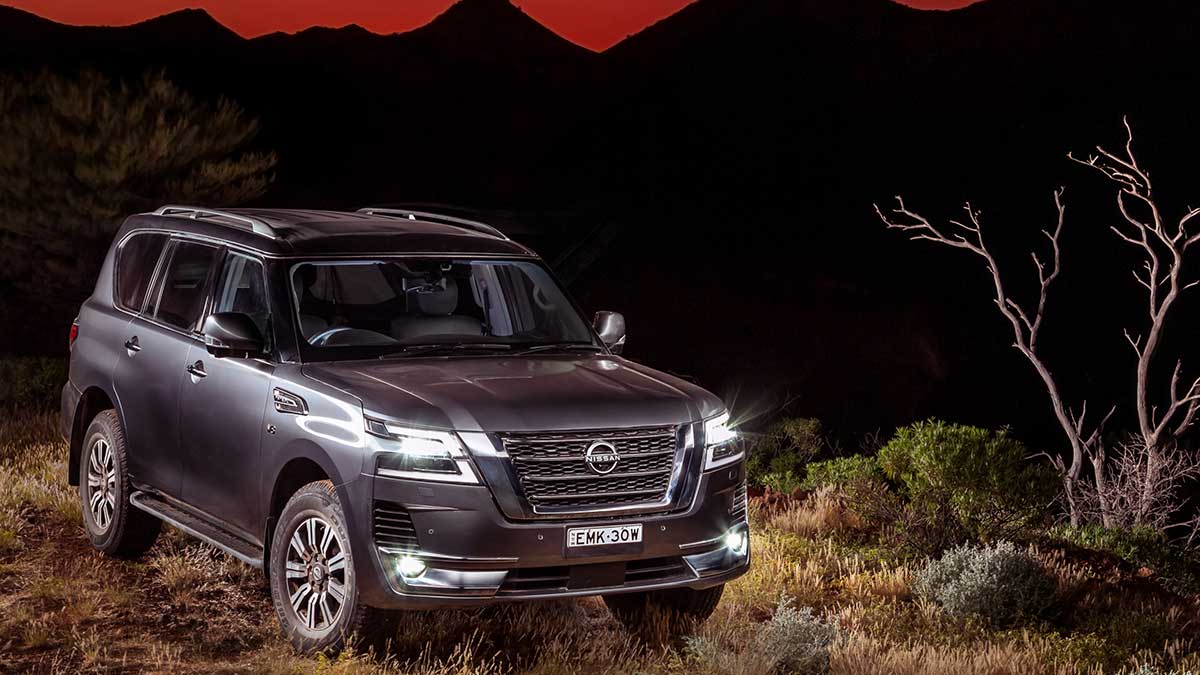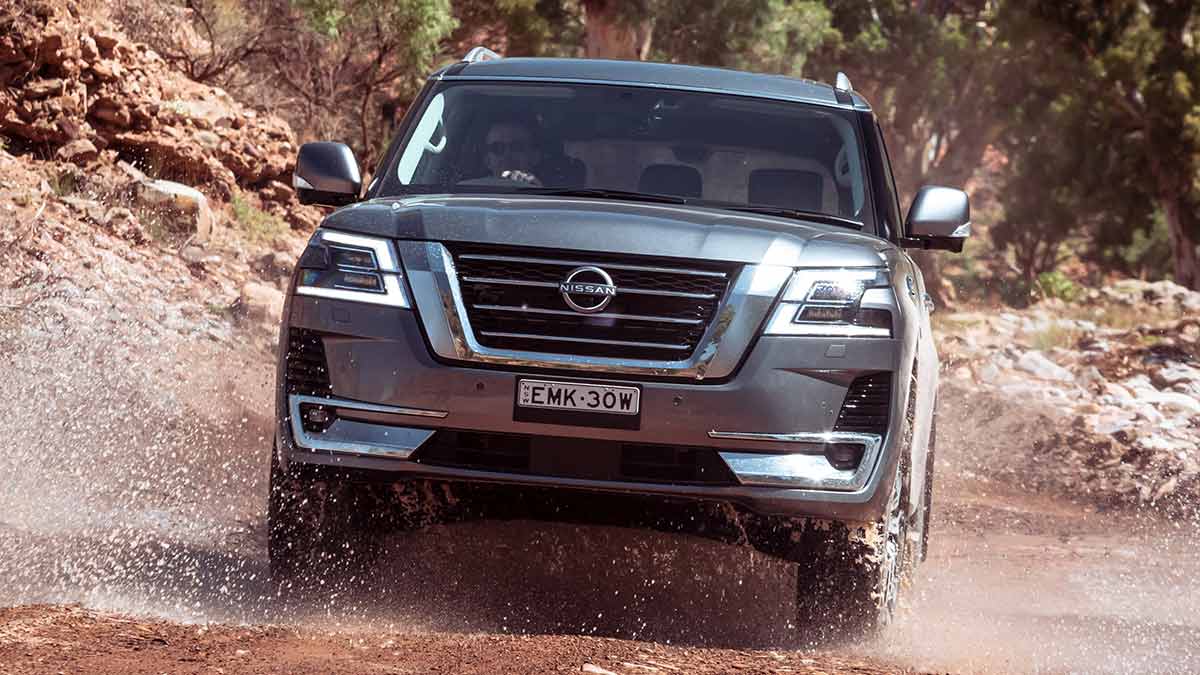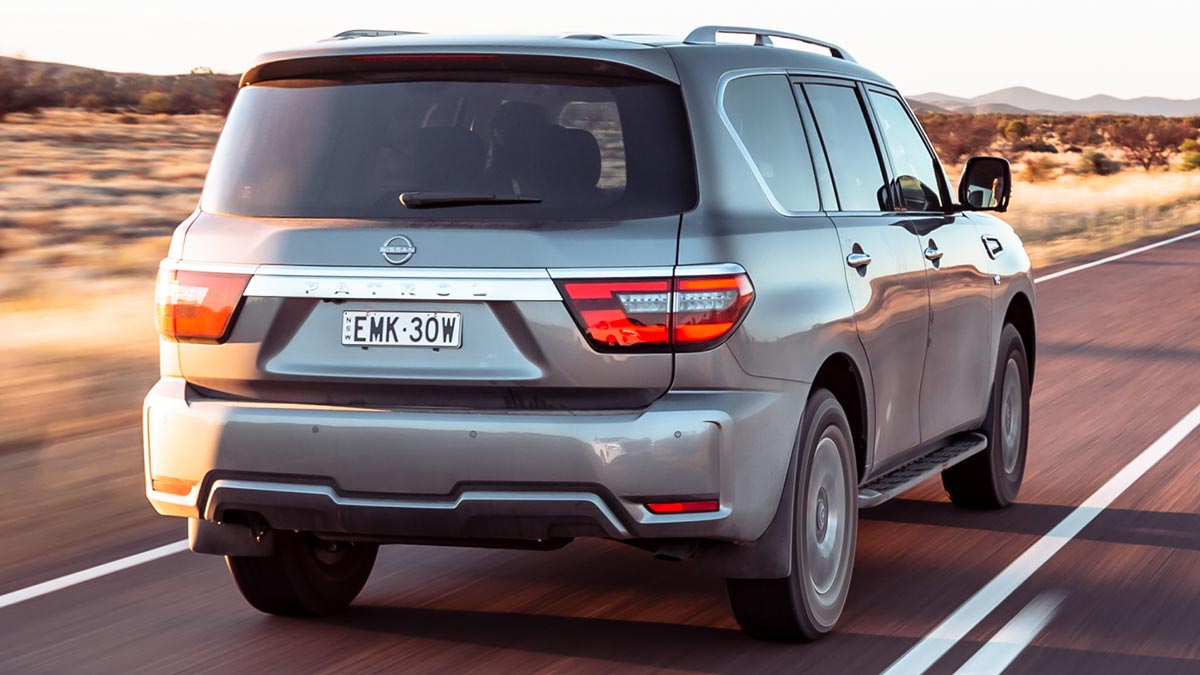The ninth-generation Toyota HiLux has arrived, bringing with it a futuristic forward exterior design, more safety and tech and the same rugged capability owners love. Will the updates tempt private buyers away from the Ford Ranger or are they just enough to keep fleets onside?
The off-road champion: 2022 Nissan Patrol road test review

The Nissan Patrol is in for the long haul. The latest version of the hulking four-wheel-drive arrived in Australia almost a decade ago, yet last year posted record sales. What’s the appeal?
Towing a boat, caravan or float typically comes down to a Toyota versus Nissan decision. Toyota has the shiny new LandCruiser 300 Series, while Nissan has the tried-and-tested Patrol.
The former is diesel powered; the latter uses a petrol V8. You’ll be waiting to get your hands on a new version of either vehicle, but the 12-month delay on the LandCruiser is around double that of the Patrol.
That helps explain why the Patrol is on track for record sales in 2022, with more than 1978 sold in the first four months of the year.
On this page
- How much does the Nissan Patrol cost?
- Is the Nissan Patrol safe?
- What's the Nissan Patrol like inside?
- What's under the Nissan Patrol's bonnet?
- Is the Nissan Patrol efficient?
- How does the Nissan Patrol drive?
- Should I buy one?
How much does the Nissan Patrol cost?
Price is one of the metrics that put the Patrol ahead of the LandCruiser. The entry Ti eight-seater kicks off at $82,160 plus on-road costs. The Ti-L variant we’re testing drops a seat and ups the bling to costs $95,115.
For reference, the Toyota LandCruiser ranges from $89,990 to $137,790.
Pre-paid servicing for the Nissan will amount to $2594 over five years. Service intervals are 12 months or 10,000km.
Is the Nissan Patrol safe?
No one has crash-tested the Y62 Nissan Patrol, meaning it is officially unrated.
It is sold in North America as the Nissan Armada and the NHTSA (the US equivalent of ANCAP) rates it as a four-star car, based on a 2019 assessment.
The Patrol’s safety features include autonomous emergency braking, rear cross-traffic alert, active lane-keep and blind-spot assist, adaptive cruise control, front and rear parking sensors and six airbags.
Tyre pressure monitoring is handy for on and off-road driving. Despite its size, the Patrol isn’t intended to be a kiddie-hauler, with just the pair of Isofix anchorage points on the outboard second row seats.
What’s the Nissan Patrol like inside?
Both variants of the Patrol have tri-zone air-conditioning, an 8.0-inch infotainment touchscreen with satellite navigation and USB connectivity.
Modern amenities such as smartphone mirroring and DAB radio are conspicuous by their absence, particularly given they can be found in the Armada. There is, however, a nostalgic touch in the form of a CD player.
Gear specific to the Ti-L version includes a 13-speaker Bose sound system, eight-inch entertainment screens mounted on the back of the front seats, a powered tailgate, heated and ventilated front seats, a sunroof and a cool box in the centre console.
The swathes of fake wood trim endow the interior with a far-from-contemporary look that highlights how long this version of the Patrol has been on sale for.
On the positive side, the Ti-L Patrol will comfortably cope with seven bodies and still have enough room of 467 litres of luggage.
What’s under the Nissan Patrol’s bonnet?
A 5.6-litre V8 petrol engine is the heart of the Nissan Patrol. Turbochargers have largely displaced the need for pure cubic capacity but, like many features in the Patrol, the V8 is an old-school touch. Unlike many of the other retro components, this one can still be appreciated: the aural and physical potency of the Patrol’s V8 is a welcome reminder of how entertaining a naturally aspirated engine can be.
Outputs are 298kW and 560Nm and that’s more than enough to see the big beast cope with towing serious loads (it’s rated to 3500kg) or overcome wind resistance (you are essentially driving a besser block on wheels) for effortless overtaking. The seven-speed automatic transmission is calibrated
Is the Nissan Patrol efficient?
Propelling more than 2700kg is always going to require a considerable amount of fuel. Nissan quotes a combined use of 14.4 litres every 100km. Light-footed drivers may achieve that: we averaged 16.5 litres/100km over an equal mix of freeway and suburban driving.
The Patrol’s 140-litre tank ensures range is comparable to its diesel-driven competition, though I’d strongly recommend not looking at the petrol bowser’s display when you’re filling it up.
How does the Nissan Patrol drive?
People don’t usually buy a Nissan Patrol purely to commute in. In the confines of the city, its size makes it a cumbersome conveyance that doesn’t fit into parking spaces and occupies more than its fair share of narrow streets.
The driving position is commanding, though, to the point where you’re looking over the top of most soft-roading based SUVs.
The steering is well balanced and the brakes had no trouble restraining the Patrol during simulated emergency stops.
Beyond its obvious competency as a tow rig, the Patrol is in its element when you head off the bitumen.
Hydraulicly linked suspension helps counter cornering lean and body bounce, reducing the risk of motion sickness for those in the second and third rows.
Ground clearance of 272mm ensures the big Nissan can navigate huge ruts without risk of damaging the underbody and the dial at the base of the transmission selector houses all the off-road modes and functions in a smart, centralised location.
The V8 supplies all the torque you need to crawl along technical sections of the track in low range, along with enough power to maintain momentum over sand or mud.
A rear diff lock is standard and the only thing owners who intend to challenge themselves and the car will need is some decent underbody protection and a winch. At that point, not much will stop the Patrol’s reconnaissance of any type of terrain.
Should I buy one?
If you can afford the petrol, yes.
The Patrol has a proven reputation for toughness and reliability that’s evident in the way the big rig drives and feels on the road or in the bush.
Put simply, it is hard to argue against the Patrol as the best petrol-powered off-road machine on the market.
The Toyota LandCruiser is the obvious rival and worth a drive for comparative purposes.
Buyers should also consider that a new Patrol should arrive here around 2024. That will bring big cabin upgrades and a rumoured twin-turbo V6 petrol engine that should improve power and torque while trimming fuel use.
The information provided is general advice only. Before making any decisions please consider your own circumstances and the Product Disclosure Statement and Target Market Determinations. For copies, visit racv.com.au. As distributor, RACV Insurance Services Pty Ltd AFS Licence No. 230039 receives commission for each policy sold or renewed. Product(s) issued by Insurance Manufacturers of Australia ABN 93 004 208 084 AFS Licence No. 227678.
